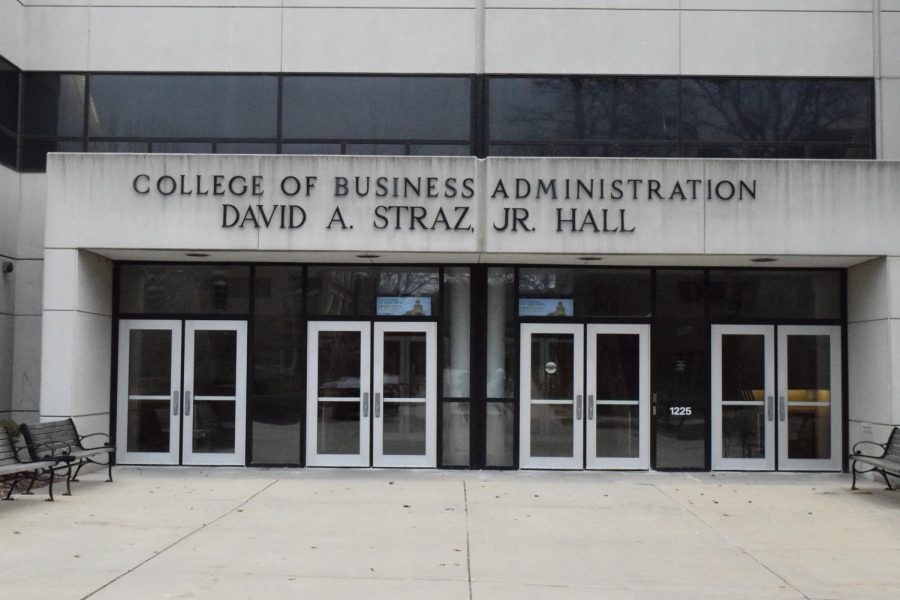What can you buy with $50,000?
With that much money, you could go from 0 to 60 mph in 4.3 seconds in your new Ford Mustang GT500, purchase a parcel of land for real estate development, or enjoy 50,000 fruit and yogurt parfaits from McDonald’s Dollar Menu.
Or, you could pay for one year of college. The choice is yours.
This year, 58 private colleges and universities published annual rates for tuition, fees, room and board that totaled more than $50,000, according to data compiled by the Chronicle of Higher Education.
In contrast, last year’s statistics listed only five institutions that surpassed the $50,000 mark.
With the amount of colleges toting $50,000 price tags nearly 12 times last year’s total, it appears that the $50,000 range has become closer to the average for private colleges.
For those unwilling to do some quick mental math, $50,000 a year times four years equals $200,000 for a four-year college degree.
For example, Sarah Lawrence College in Bronxville, N.Y. topped the list with a total of $55,788, while the Franklin W. Olin College of Engineering in Needham, Mass. took up the last spot at number 58 with $50,025.
Dan Banaszynski is a freshman at Boston College, which ranked 24th with a tuition of $50,970.
“Personally, I think it’s ridiculous that tuition is so much,” Banaszynski said. “Some students’ parents don’t make that much in an entire year. One of my friends may actually have to transfer after the end of the year because his parents can’t afford to pay tuition for all four years.”
Marquette did not make the list, with an annual comprehensive total of undergraduate tuition ($28,680), typical room and board ($9,680) and other fees ($416) amounting to $38,776, according to the Marquette’s Web site.
“I definitely would not be able to come here if the tuition was (more than $50,000),” said Parker Farabee, a freshman in the College of Communication. “I’m really glad Marquette didn’t make it onto that list, and I hope it doesn’t anytime before I graduate.”
Though colleges and universities nationwide are experiencing tuition hikes, none of those on the $50,000 tuition and fees list were public schools.
According to the College Board, the average cost of a private four-year college in 2009-’10 is $26,273, up 4.4 percent from last year.
The College Board also reported that over the past quarter-century, the average cost of higher education has increased at a rate four times faster than that of inflation.
At this rate, college inflation is unsustainable, meaning most U.S. families will soon be unable to send their kids to college, according to research done by Jussi Keppo, an associate professor of economics at University of Michigan.
And yes, students can also blame the trend of increasing tuition on the state of the economy.
The market downturn of 2008 took a toll on college endowments, which dropped by an average of 23 percent in the five months following the economic slump, as reported by the Commonfund Institute’s Higher Education Price Index.
This decrease is at the core of the recent college tuition hike trend, since the cushions that college endowments provided for discounting tuition have shrunk.
“When endowments and gifts decrease, the university has to somehow make up the difference between their tuition rate and the actual cost of running the university,” said Noreen Lephardt, adjunct assistant professor of economics. “They can do that by raising tuition.”
Regarding the spike in the number of schools that recently posted annual comprehensive totals of over $50,000, it may very well be attributed to the bandwagon effect, Lephardt said.
“Schools are aware of what their competitors do,” Lephardt said. “As other schools increase their tuition — especially their close competitors — they will also.”
Lephardt said universities have to be careful not to change their fees so much that it drives students away, but keep costs consistent with similar schools so it doesn’t arouse the suspicion that they are of lesser value than their competitors.
“They have to find a balance, but be competitive at the same time,” Lephardt said.






